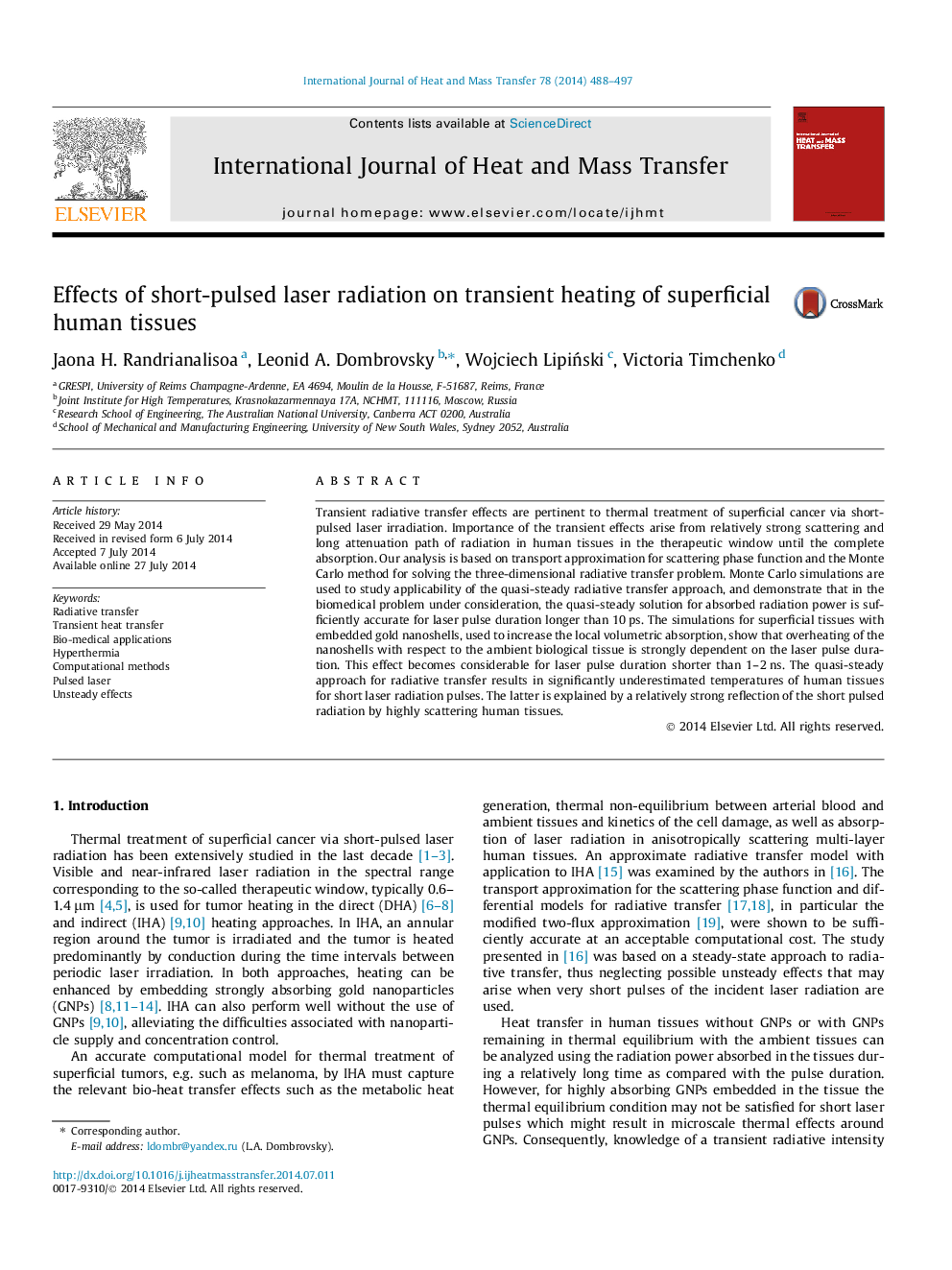| Article ID | Journal | Published Year | Pages | File Type |
|---|---|---|---|---|
| 657717 | International Journal of Heat and Mass Transfer | 2014 | 10 Pages |
Transient radiative transfer effects are pertinent to thermal treatment of superficial cancer via short-pulsed laser irradiation. Importance of the transient effects arise from relatively strong scattering and long attenuation path of radiation in human tissues in the therapeutic window until the complete absorption. Our analysis is based on transport approximation for scattering phase function and the Monte Carlo method for solving the three-dimensional radiative transfer problem. Monte Carlo simulations are used to study applicability of the quasi-steady radiative transfer approach, and demonstrate that in the biomedical problem under consideration, the quasi-steady solution for absorbed radiation power is sufficiently accurate for laser pulse duration longer than 10 ps. The simulations for superficial tissues with embedded gold nanoshells, used to increase the local volumetric absorption, show that overheating of the nanoshells with respect to the ambient biological tissue is strongly dependent on the laser pulse duration. This effect becomes considerable for laser pulse duration shorter than 1–2 ns. The quasi-steady approach for radiative transfer results in significantly underestimated temperatures of human tissues for short laser radiation pulses. The latter is explained by a relatively strong reflection of the short pulsed radiation by highly scattering human tissues.
